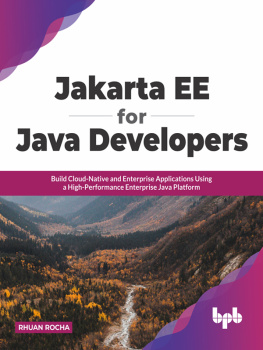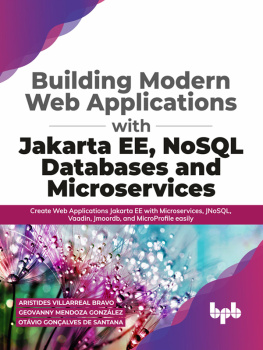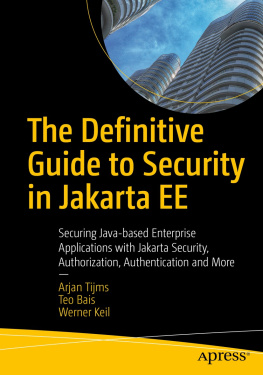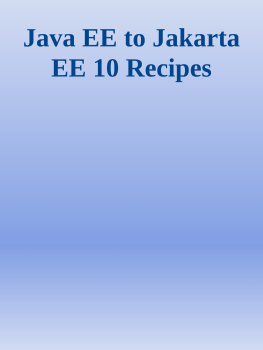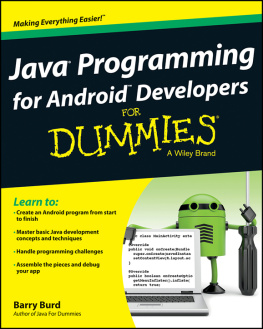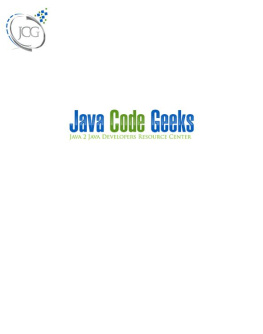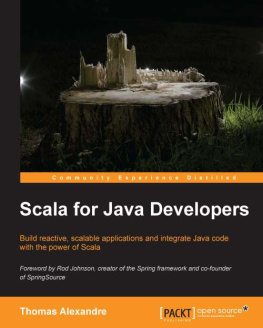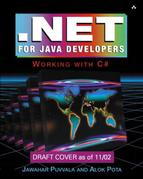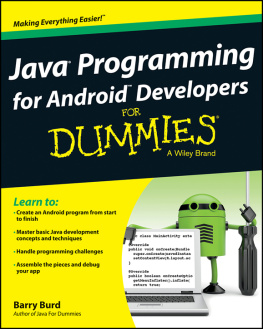Rocha Rhuan - Jakarta EE for Java Developers
Here you can read online Rocha Rhuan - Jakarta EE for Java Developers full text of the book (entire story) in english for free. Download pdf and epub, get meaning, cover and reviews about this ebook. year: 2022, publisher: BPB Publications, genre: Computer. Description of the work, (preface) as well as reviews are available. Best literature library LitArk.com created for fans of good reading and offers a wide selection of genres:
Romance novel
Science fiction
Adventure
Detective
Science
History
Home and family
Prose
Art
Politics
Computer
Non-fiction
Religion
Business
Children
Humor
Choose a favorite category and find really read worthwhile books. Enjoy immersion in the world of imagination, feel the emotions of the characters or learn something new for yourself, make an fascinating discovery.
- Book:Jakarta EE for Java Developers
- Author:
- Publisher:BPB Publications
- Genre:
- Year:2022
- Rating:4 / 5
- Favourites:Add to favourites
- Your mark:
- 80
- 1
- 2
- 3
- 4
- 5
Jakarta EE for Java Developers: summary, description and annotation
We offer to read an annotation, description, summary or preface (depends on what the author of the book "Jakarta EE for Java Developers" wrote himself). If you haven't found the necessary information about the book — write in the comments, we will try to find it.
Jakarta EE for Java Developers — read online for free the complete book (whole text) full work
Below is the text of the book, divided by pages. System saving the place of the last page read, allows you to conveniently read the book "Jakarta EE for Java Developers" online for free, without having to search again every time where you left off. Put a bookmark, and you can go to the page where you finished reading at any time.
Font size:
Interval:
Bookmark:

Java
Developers

Using a High-Performance Enterprise Java Platform


www.bpbonline.com
FIRST EDITION 2022
Copyright BPB Publications, India
ISBN: 978-93-55510-082
All Rights Reserved. No part of this publication may be reproduced, distributed or transmitted in any form or by any means or stored in a database or retrieval system, without the prior written permission of the publisher with the exception to the program listings which may be entered, stored and executed in a computer system, but they can not be reproduced by the means of publication, photocopy, recording, or by any electronic and mechanical means.
LIMITS OF LIABILITY AND DISCLAIMER OF WARRANTY
The information contained in this book is true to correct and the best of authors and publishers knowledge. The author has made every effort to ensure the accuracy of these publications, but publisher cannot be held responsible for any loss or damage arising from any information in this book.
All trademarks referred to in the book are acknowledged as properties of their respective owners but BPB Publications cannot guarantee the accuracy of this information.

www.bpbonline.com
Ivonete Rocha
My mother, who has believed in my dreams.
Rhuan Rocha is an experiment Java engineer that has created many projects using the Java EE/Jakarta EE specifications. He has worked for a big Jakarta EE vendor called Red Hat with the Wildfly/JBoss EAP. Throughout your career, he has developed many Enterprise Java applications for private companies and governments in Brazil, using Java EE/Jakarta EE and technologies of its ecosystem.
Now, Rhuan Rocha is Principal Software Engineer at DigiBee developing its integration platform, a Jakarta EE specialist, and Co-founder of Cloud Conference Day. He is an Open Source contributor and contributed to JNoSQL, RestEasy, TomEE, Quarkus, and others.
Bauke Scholtz is an Oracle Java Champion, a member of the Jakarta Faces Expert Group and the main creator of the Jakarta Faces helper library OmniFaces. He is on the internet more commonly known as BalusC who is among the top contributors on Stack Overflow. He is a web application specialist and consults or has consulted for these Virtua.tech, Mercury1.co.uk, MyTutor.co.uk, LinkPizza.com, ZEEF.com, ITCA.com, RDC.nl and more clients from fintech, affiliate marketing, social media and more as part of his more than 20 years of experience.
Write a book is a hard task that starts long before typing the first word of the chapter. Accumulate knowledges and experiences is a big journey that requires many sacrifices. I really thank my family, closer friends, and teachers that have helped me in this journey. I want to make a special thank you to Bruna Grellt and Joo Purificao, that are big friends that have helped me in many things.
I would like to thank communities like SouJava and others that have helped me a lot to improve my knowledge, and a big thanks to Karina Varela that helped me a lot in my career.
Finally, I would like to thank BPB Publications for giving me this opportunity to write my first book for them.
The Java ecosystem has had many changes in its tools and approaches, generated by new challenges that came from Cloud Computing. Cloud Computing did force the developer to rethink its processes to developer application, its architectures, and approaches, and came to a new concept called Cloud Native Application. With this, the Java ecosystem needs the be rethinking as well, and the communities and companies started a big change in the Java ecosystem. One of these updates was the rebrand of Java EE to Jakarta EE and its new process to evolve this specification over the Eclipse Foundation.
In this book, we explain the rebrand of the Java EE to Jakarta EE, and how the new evolve process works. It is very important to understanding the Jakarta EE moment and to know what is expected by this specification. Furthermore, we talk about the changes applied between the Java EE 8 over Oracle and the Jakarta EE 9 over Eclipse Foundation.
This book has a practical approach and you will create one project per chapter. It enables you to read just the chapter you want to read because the chapters do not have a dependence between them. Each chapter is focused on one specification. Thus, this book can help you in many kinds of projects using Spring, Quarkus, Micronault, or others that use some Jakarta EE specification.
introduces the Jakarta EE specification and its new process to evolve the specification by the Eclipse Foundation. At the end of this chapter, you will know about the environment and what is needed to start a project.
shows you Jakarta Servlet using a practical way. Throughout this chapter you will learn how can we create a Servlet, how can we filtering requests and responses, what are Forward and RequestDispatcher and how can we use them, how can we work with the synchronous process, how can we work with Nonblocking I/O and how can we use Server Push.
explain what is Jakarta Context and Dependency Injection (CDI) in a practical way. In this chapter you will learn how we can use CDI to injection bean, how the CDI life cycle works, how we can use the producer method and producer field to product objects instances, how we can use dispose method, how can we create a CDI Interceptor and how can we create a CDI Decorator.
explains what is Jakarta RESTful Web Service using a practical way. In this chapter, you will learn how we can create a RESTful resource class, how we can extract request parameters, how we can use the Bean Validation with Jakarta RESTful Web Service, how we can create a RESTful Client, how we can make an asynchronous invocation in the client and how we can use a Server-Sent Event (SSE).
explains what is the Jakarta Enterprise Bean covering the principal concepts and practicals. Besides, well explain how to implement stateless bean, statefull bean, singleton bean and how it one manages transaction. At the end of the chapter, we will show you how we can create schedules of tasks and what is a statefull clustered.
explains what is the Jakarta Persistence using a practical way. In this chapter, you will learn how can we make operations in a relational database, how we can mapping a table to entity, how we can use JPQL to make queries, how we can use EntityManager, how we can make a control of concurrent access to entity data and how we can make fetch plans using entity Graphs.
explains what is the Jakarta Messaging and what are its aims. Besides that, throughout this chapter, well show you how we can create a Queue, how we can create a Topic, how we can create a producer and consumer, and finally, we will show how we can implement a Message-Driven Bean.
Font size:
Interval:
Bookmark:
Similar books «Jakarta EE for Java Developers»
Look at similar books to Jakarta EE for Java Developers. We have selected literature similar in name and meaning in the hope of providing readers with more options to find new, interesting, not yet read works.
Discussion, reviews of the book Jakarta EE for Java Developers and just readers' own opinions. Leave your comments, write what you think about the work, its meaning or the main characters. Specify what exactly you liked and what you didn't like, and why you think so.

